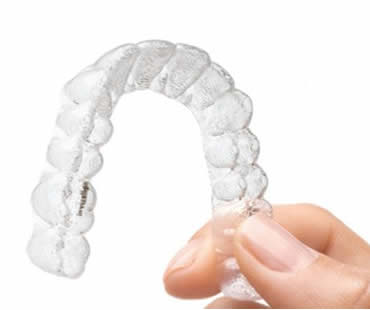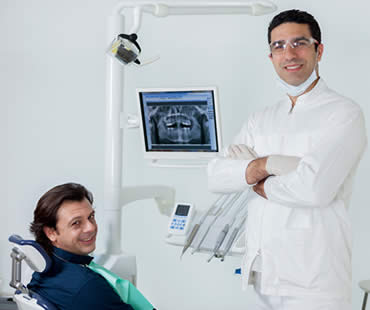
Even though regular checkups and proper dental hygiene greatly decrease the need for root canal treatment, the fact remains that it is one of the most common procedures performed by dentists today. What are some of the most common reasons you might need this dental solution?
Decay:
The primary cause for root canal procedures is decay that has entered the tooth pulp chamber and progressed to the point of causing infection or abscesses. Pain and tooth sensitivity often accompanies severe decay. Root canal treatment is the best way to avoid tooth extraction and restore oral health.
Trauma:
If a tooth endures strong force such as from a sports injury, car accident or fall, the trauma can damage the tooth so badly that root canal treatment is needed. Even if trauma isn’t completely evident at first, a severed nerve to the tooth can cause it to die over time.
Genetics:
Traits of teeth like their strength are passed along through genes. Some people inherit soft teeth that are more prone to decay, making it difficult to avoid decay even with diligent oral hygiene.
Tooth fracture:
A tooth can be fractured through chewing hard foods or ice, teeth grinding or clenching, or habits like nail biting. Even hairline fractures may allow bacteria to enter the tooth’s pulp and cause infections. Once the bacteria takes hold, root canal treatment may become necessary.
Deep cavity:
Deep cavities within teeth can allow infections to thrive, eventually causing the tooth to become inflamed or die. A deep cavity isn’t necessarily painful, so patients may not even realize they have an infection. Regular dental checkups help catch cavities early, before they are able to become so deep and serious.
Previous dental work:
Extensive or repeated dental work can cause trauma to teeth nerves and associated inflammation, making root canal therapy an important solution.
Schedule your appointment at our Longview dental office

If you are dealing with ongoing tooth pain, you may be too fearful to go to the dentist to find out what’s going on. It’s important that you do, however, as you may need root canal therapy. Your dentist will need to evaluate you to see if that procedure is necessary, and will closely examine several factors: the signs the dentist can see personally, the results of any tests performed during your visit, and the symptoms you have been experiencing with the problematic tooth.
Your dentist may observe:
- A tooth that is discolored
- X-rays that reveal a tooth problem
- A fistulous tract, or persistent or recurring gum pimple
Additional testing done by your dentist:
- X-rays provide an extremely clear picture of the health of the tooth
- Thermal testing can evaluate sensitivity through a careful application of hot or cold temperatures
- Percussion testing evaluates pain response through gentle tapping
You may have been noticing:
- A broken or cracked tooth obviously decayed or damaged
- A discolored tooth, especially a grey tooth
- A “bubble” in your gums, like a pimple. It may or may not have ruptured, leaking pus that smells or tastes awful
- Pain that shoots out from one tooth to your jaw or ear, leading to earache symptoms
- Pain that prevents you from living your life without painkillers
- Pain, sensitivity or swelling on one certain tooth
- Extreme sensitivity to hot or cold liquids that lingers and is very painful
In some cases, an infected tooth that requires a root canal treatment has no symptoms at all that could be discerned by you. Only a dental professional can confirm the need to undergo root canal therapies. If you are experiencing pain that disrupts your life, talk to your dentist or endodontist immediately. Root canal treatments are designed to relieve the pain you’re experiencing now and to restore your tooth to full form and function. Don’t wait to get your life and smile back!
Schedule your appointment at our Longview dental office

Not every smile is perfect, so many people want to improve their look through orthodontics. It’s not just a rite of passage for youth anymore; people of all ages pursue new smiles these days. A modern technology that is stylish and hassle-free has been developed called Invisalign. It provides great results without impacting your life as much as traditional braces.
The first step is choosing a dental professional who offers Invisalign treatment, since not every provider is trained and qualified in this approach. Once you find the right professional, the dentist will assess your mouth and determine if you’re a good candidate. With the exception of severe misalignment, most people can benefit from Invisalign.
To get started, your dentist will take teeth impressions and X-rays to create a 3D image of your mouth. That helps determine your treatment plan, how long you can expect the process to last, and allow you to see your teeth at each stage. Being able to see the final outcome is a great advantage of Invisalign.
Clear plastic aligners will be customized for your teeth. They are hardly noticeable in your smile and won’t cause irritation or discomfort. You’ll be instructed to wear them for 22 hours a day for a couple of weeks as they gently move your teeth into better positions, after which you’ll switch to a new set of aligners in the series. The trays are removed for cleaning and eating, making them much simpler than traditional braces. Your normal oral hygiene routine isn’t impacted, as you can continue brushing and flossing as usual without the appliance in your mouth. Many patients also rave about the fact that their diets do not need to change; there are no restrictions with Invisalign.
A checkup with your dentist is needed every 4-6 weeks to monitor your progress. It usually takes from 12-18 months to complete Invisalign treatment. With proper wear, you’ll end up with a beautiful smile without having to suffer through the common complaints of orthodontics.
We look forward to seeing you in our Longview dental office

If the prospect of a root canal procedure has you running for the hills, you may want to consider reading over this list of frequently asked questions before you end up cowering in a corner:
- What is root canal therapy? Root canal treatment is performed when decay or trauma has damaged a tooth causing it to die. A dentist or endodontist performs a procedure to remove the diseased or damaged pulp from the tooth and then refills the tooth cavity.
- Is root canal therapy painful? In reality, root canal treatment is intended to relieve pain, not cause it. Because the procedures are very similar, you should experience no more discomfort than having a cavity filled.
- What happens after root canal therapy? Your tooth may be slightly sensitive for a few days, but over-the-counter pain relievers are usually sufficient to relieve any pain you may experience. In order for your tooth to return to full functionality, a crown or other restoration will need to be placed after the root canal therapy is performed.
- What if I opt not to choose root canal therapy? Untreated damage or infection in your tooth can travel through the roots and lead to an abscess or larger infection.
- Is there an alternative to root canal therapy? You could relieve the pain and infection by having your tooth removed. However, this can cause problems such as bone loss, migration of teeth, and bite problems.
In the case of a severely damaged or decayed tooth, the ideal solution is to save your natural tooth through root canal therapy and restoration. Contrary to popular belief, a root canal procedure is no more uncomfortable than having a filling placed in a cavity, and can have enormous benefits to your long-term oral health. Consult with your dental professional to get answers to any other questions or concerns you may have regarding root canal therapy so you can alleviate your fears and return to your healthy smile.
Schedule your appointment at our Longview dental office

Having a smile that embarrasses you is not a good way to go through life. With so many options available for improving the way your teeth look, there’s no reason to continue trying to hide them. One of the best options available today is Invisalign, or invisible braces. This innovative technology may be able to help you transform your smile without the hassles of traditional orthodontics.
Invisalign consists of a series of clear plastic aligning trays that gently shift your teeth into better positions. Practically invisible when worn, these aligners are removable for eating and cleaning. No dealing with a mouthful of unsightly metal, avoiding restricted foods, or worrying about food becoming stuck in your braces.
What types of problems can Invisalign correct? Some common flaws include gaps between teeth, crowded teeth, overlapping teeth, mild malocclusions, or twisted teeth. Issues like these not only impact the appearance of your smile, but can also cause oral health complications such as difficulty in cleaning or improper wearing on your teeth.
Who should consider Invisalign? Anyone with teeth problems like those above is likely a good candidate, especially those who want to make the best impressions on others in their professional and personal lives. If you want to repair your smile without wearing traditional braces and have the choice of removing your orthodontics for special occasions, then you’ll find Invisalign very appealing. This applies to patients of many ages, from adults in the working world to self-conscious teens. Invisalign is a great solution for those who play sports or play musical instruments that might be hindered by traditional braces.
If you are unhappy with your smile, schedule a consultation with a professional who offers Invisalign as a treatment option. Find out if this treatment can help you, and begin your journey to a brand new beautiful smile.
Schedule your appointment at our Longview dental office

Straighter teeth are possible through traditional metal braces or Invisalign clear aligners, but how do you know which are right for you? These two types of orthodontics work differently to improve smiles. Invisalign uses invisible removable plastic aligners to gradually shift teeth, while metal braces require brackets bonded to the teeth and arch wires to apply pressure to move the teeth.
If you are deciding between these two types of treatment, ask yourself some questions to help you choose:
- How severe is your case? Moderate conditions like overcrowding, gaps, and overbite or underbite issues can be treated with either option. However, more severe cases like malocclusions, jaw problems, crossbites, or seriously crooked teeth may require metal braces for more effective results.
- Do you care if others see your braces? Metal braces are very noticeable and bulky, while Invisalign is virtually invisible in your smile. Adults and self-conscious teens may prefer the concept of hidden orthodontic treatment.
- Will you be diligent in wearing aligners? They should be worn at least 22 hours each day for best results, so neglecting to wear them consistently can negatively impact your smile or require longer treatment time.
- Are you concerned about keeping your teeth clean? Metal braces can be difficult to clean because food becomes caught in the wires and brushing may not easily reach all areas. Since Invisalign trays are removable, brushing and flossing are performed normally throughout the process.
- Are you worried about teeth stains? Since it’s easier to keep teeth clean with Invisalign, you avoid the risks of stains from food and plaque buildup around metal braces that may stain your teeth.
- How often do you want to visit the orthodontist? Metal braces require office visits at least every 4 weeks for tightenings. Invisalign trays are changed every 2 weeks, but many orthodontists provide a series of trays to take home so that an office visit isn’t required each time. It’s possible that you may not visit the orthodontist as often with Invisalign.
The ideal choice for your orthodontic treatment can be decided by consulting with your orthodontist. Find out which option will best transform your smile.
We treat patients from Longview and the surrounding area









